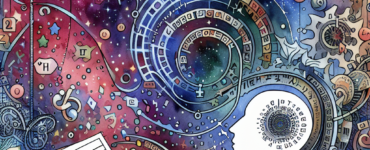Have you ever wondered how the quirky phrases and idioms involving animals that we use in daily conversation came to be?1 These expressions, rich in imagery and meaning, often hold fascinating backstories reflective of cultural practices, historical events, and the human-animal relationship. From the stealthy “cat burglar” to someone having “butterflies in their stomach,” the evolution of animal idioms across languages and cultures provides a window into the way societies view and interact with the animal kingdom2.
Animal idioms are pervasive across languages, acting as a linguistic bridge that reflects shared experiences with the natural world, albeit with local flavors. For example, the English idiom “let the cat out of the bag” refers to revealing a secret. This phrase allegedly originates from medieval markets where piglets were sold in bags, and unscrupulous sellers might substitute a less valuable cat for the pig, only revealing the deceit if the bag was opened3. Contrast this with the French expression “acheter chat en poche” (to buy a cat in a bag), reflecting a similar cautionary tale about making purchases without proper inspection. This cross-pollination of animal-themed expressions showcases how languages evolve similarly in response to universal human experiences and societal norms.
The cultural significance of certain animals plays a pivotal role in the formation and transformation of idioms. In English, being described as a “wolf in sheep’s clothing” is to warn of someone who pretends to be harmless while hiding malicious intentions. This metaphor, drawn directly from one of Aesop’s Fables, has parallels in numerous languages, underlying the universal recognition of deceit4. Meanwhile, in East Asian cultures where the tiger is a symbol of power and courage, expressions like the Korean “paper tiger,” denote something or someone that appears threatening but is ineffectual upon closer inspection5. These examples illustrate how societal values and attitudes toward specific animals shape the idiomatic expressions unique to each culture.
Changes in societal attitudes towards animals and their rights also reflect in the evolving language. Expressions that were once common and not thought twice about are now being reconsidered in light of modern ethical standards. For instance, the term “to kill two birds with one stone” is often replaced with “to feed two birds with one scone” in contexts promoting animal welfare and non-violence. Similarly, “bringing home the bacon” might evolve into “bringing home the bagels” in communities that emphasize vegetarian or vegan lifestyles, showcasing an ongoing shift in language to align with contemporary values6.
This brief exploration into the world of animal idioms demonstrates that language is not only a tool for communication but also a mirror reflecting the intricacies of human thought, culture, and the evolving relationship with the natural world. It’s through understanding these expressions that one can gain insight into the values, norms, and shared history of different societies7.
As we continue to navigate the rich tapestry of global cultures and languages, let us remember the words of Ludwig Wittgenstein: “The limits of my language mean the limits of my world.” In embracing the diversity of expressions, we expand not only our linguistic repertoire but also our worldview, fostering greater empathy and connection across cultures.
- https://www.rd.com/list/where-animal-sayings-come-from/ [↩]
- https://www.academypublication.com/issues2/tpls/vol10/06/12.pdf [↩]
- https://www.phrases.org.uk/meanings/let-the-cat-out-of-the-bag.html [↩]
- https://aesopsfables.wordpress.com/the-wolf-in-sheeps-clothing/ [↩]
- https://www.collinsdictionary.com/dictionary/english/paper-tiger [↩]
- https://www.peta.org/features/animal-friendly-idioms/ [↩]
- khttps://www.englishclub.com/vocabulary/idioms-animal.php [↩]






































Add comment